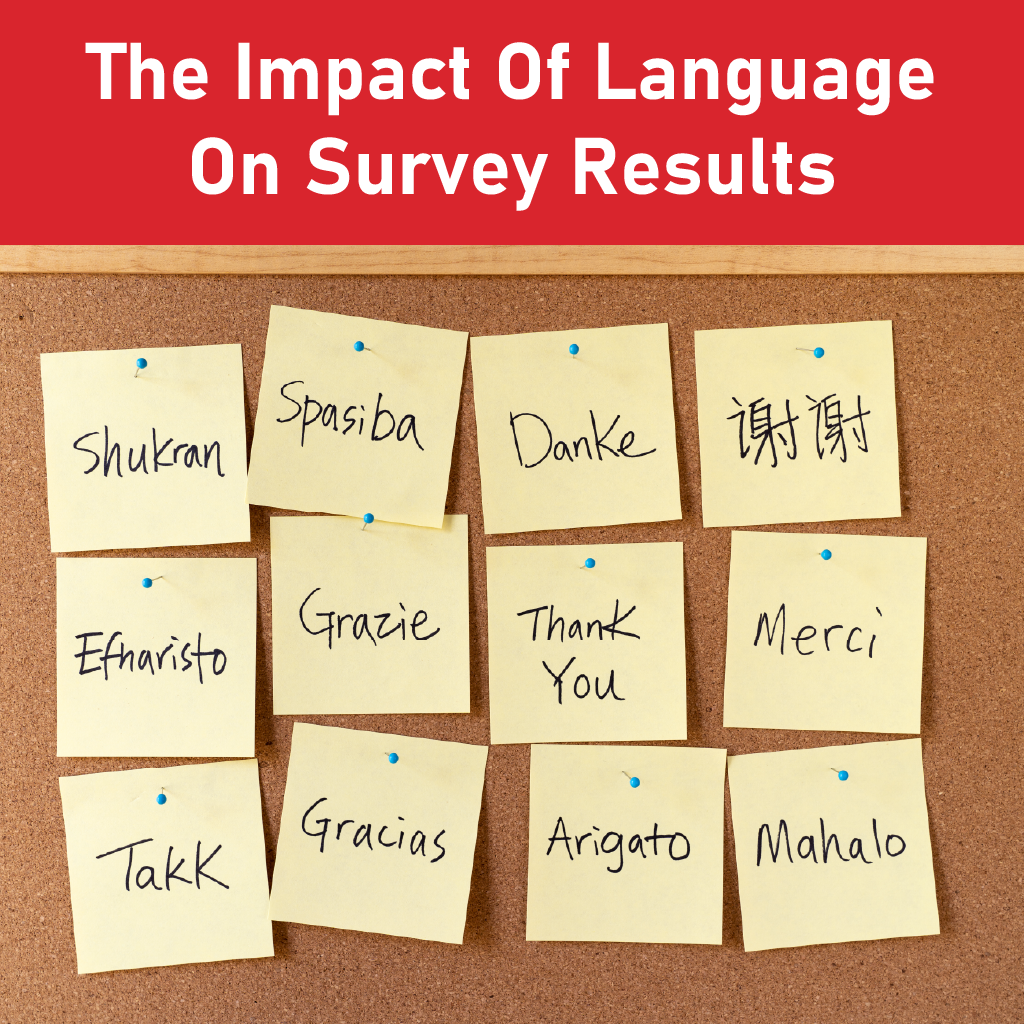
The Impact Of Language On Survey Results
Did you know more than 7,000 languages are spoken around the world today?
With so many languages spoken, the possibilities for misinterpretation are endless! A recent study reported that different languages had varying perceptions of time, size, color as well as broader concepts like intentions, gender and blame.
It’s certain some messages are bound to be lost in translation!
In the market research (MR) community, languages can have a huge impact on study results. MR firms often use English as the language of choice to improve their reach among global audiences, and rely on agencies to translate surveys to local languages if needed. It’s essential to avoid misinterpretation in these translations to ensure survey results capture the whole truth.
If your business has a global presence, it’s paramount to choose teammates and partners who understand the impact of language, its perceptions and translations on survey results. Let’s look at understanding some of the challenges that arise from translation and how to curb them for better survey results.
Translation challenges in surveys
1. Over-simplified translations
When agencies or research providers make translations too basic and simple, it could result in challenges for your local language survey participants. For example, translating an English question word-for-word to a local language could make the text too confusing or even misleading for local language speakers. This could affect survey results because participants might not give genuine responses to the overly-simplified text.
2. Respondent misinterpretation
On the other hand, respondent misinterpretations occur when local language participants perceive questions differently in their language than what you intended. For example, because separate languages interpret concepts like time or size differently, they may misinterpret your translated survey questions and give unintentional answers that don’t reflect their true feelings. This in turn, can skew your survey results even further when translated back to English.
Employing the below survey creation basics can help you avoid such translation losses and improve research results.
Essential survey tactics to avoid translation losses
1. Using simple sentence structures

Shorter, concise sentence structures can minimize the impact of translation on your surveys. Walk the fine line between providing adequate context without complicated words and sentences, and your translation agency and survey respondents (regardless of their language) will thank you!
2. Providing close-ended questions wherever feasible
While any survey typically consists of open and close-ended questions, businesses often like to hear their audience’s feelings in their own words and add open-ended questions. If your participants speak diverse languages, take a moment to evaluate if you can receive all the information you need from a close-ended question. If yes, you can avoid misinterpretations with some multiple-choice or yes/no questions!
3. Reviewing surveys repeatedly internally
Think of survey creation as a group activity. When a colleague or team reviews your work, they’ll bring a new perspective to your survey’s effectiveness with diverse audiences. By being open to their experience, feedback and comments, you can ensure your sequence of questions, choice of words and the overall survey is much more robust. They can also provide helpful tips to ensure translation losses don’t affect your survey results.
1. Employing multilingual surveys as needed
Even if your survey is good to be deployed, take some time to assess your sample pool. For example, if you’re looking to survey migrant workers with diverse language backgrounds, it may be more convenient to create multilingual surveys while partnering with local MR firms, rather than simply translating via an agency. This way, while your investments will be more, your survey results will be more accurate with genuine responses.
2. Deciding if survey results will be categorized multilingually too
If you do decide to create multilingual surveys, think about how you wish to view the results as well. A good practice might be to categorize survey results by language. While this may seem tedious, it also ensures there is minimal scope for translation errors and the results derived from this data cannot be misinterpreted.
Finalizing your tactics beforehand and having an action plan for the responses you receive can minimize confusion once the survey data is in front of you for analysis.
At Philomath Research, valuing the power and impact of languages on survey results has helped us tremendously with our global clientele. Our research solutions often account for language differences, so that study results are never biased.
After all, surveys that acknowledge the impact of language are never lost in translation!